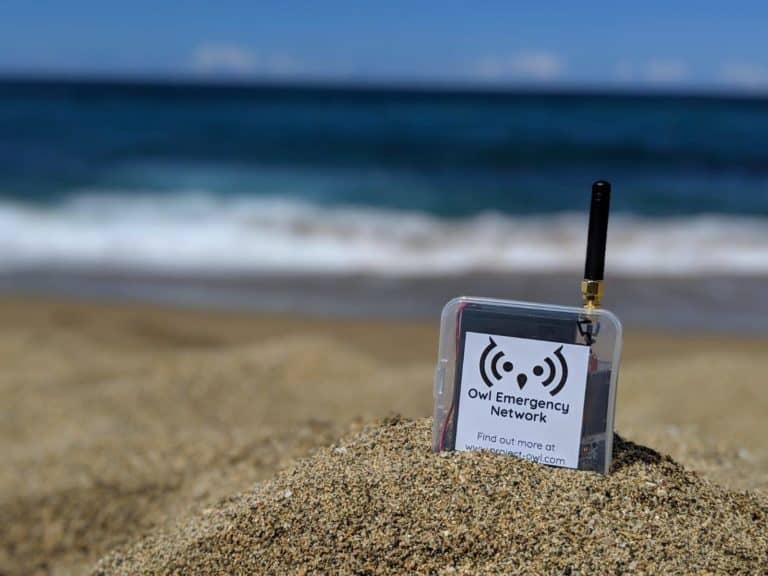When transmission masts fail during a natural disaster, communication between affected communities and rescue workers suddenly becomes very difficult. A project supported by IBM developed a solution to set up a wifi network in flooded areas that restores communication. That’s what Bloomberg writes.
With its Call for Code contest last year, IBM challenged developers around the world to use cloud, artificial intelligence and other technologies to enhance disaster preparedness. A team of five young programmers from New York beat over 2,500 other entries worldwide with their Project Owl, which stands for Organization, Whereabouts and Logistics.
The solution consists of small electronic devices, called DuckLinks. These are protected by a rubber housing and can be distributed in the affected region after a natural disaster to set up a WiFi network. In this way, communication between victims and rescue workers can be re-established, and information on, for example, weather conditions can be collected. The solution is relatively simple and inexpensive, but also very efficient.
The team was able to win the first prize of $200,000 and deployed the DuckLinks together with IBM in five regions in Puerto Rico last March, to test the system. These are areas that were destroyed by Hurricane Maria in 2017. During the worst disasters, chaos and disinformation prevail, says Bryan Knouse, CEO and co-founder of Project Owl to Bloomberg. With better information and better analytics, you can bring help to locations that need it most.
Pilot
During the pilot program in Puerto Rico, several DuckLinks were fastened with Velcro to trees in the jungle, placed on top of sand dunes, and mounted on car doors and rock walls. There were even DuckLinks floating in helium balloons above buildings. In this way, Project Owl succeeded in setting up an active internet network with 23 DuckLinks over an area of approximately 2.6 square kilometres. Range was created in areas where there is normally no mobile reception.
Once the devices are connected, an emergency Wi-Fi network appears on smartphones in the area. This leads users to a special portal, where they can send messages to social workers. All DuckLinks are connected to the cloud software service PapaDuck. This in turn provides an overview of the number of citizens who have access to the emergency portal. It also makes it clear where help is urgently needed.
Project Owl hopes to get the system up and running by the start of the hurricane season on the east coast of the United States, which starts in July. The Weather Company, a subsidiary of IBM, predicts that seven hurricanes will strike in 2019, three of which could be catastrophic.
Related: IBM weather forecasting system uses smartphones as a barometer
This news article was automatically translated from Dutch to give Techzine.eu a head start. All news articles after September 1, 2019 are written in native English and NOT translated. All our background stories are written in native English as well. For more information read our launch article.